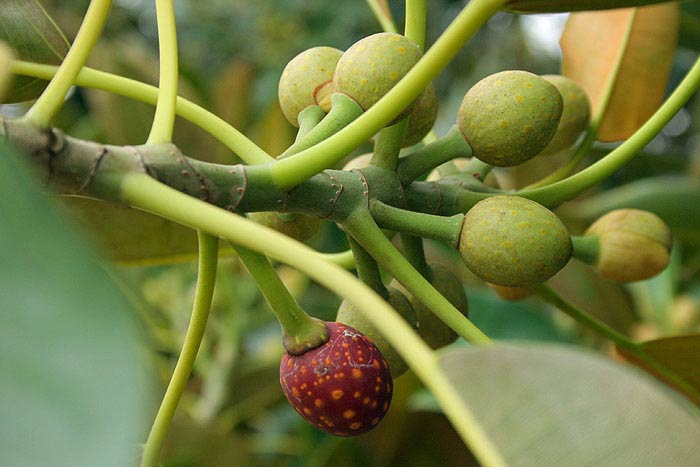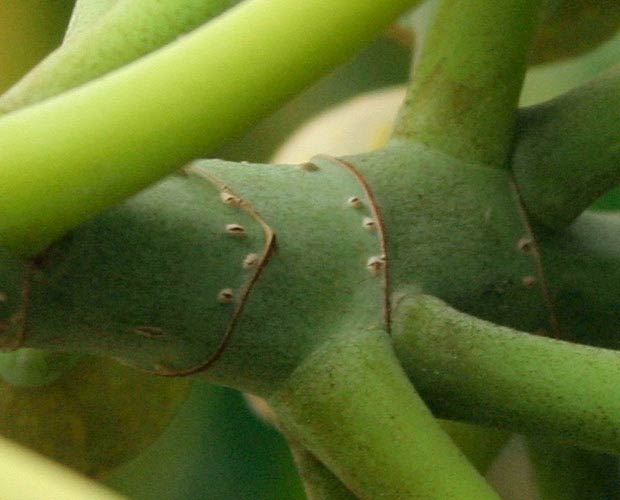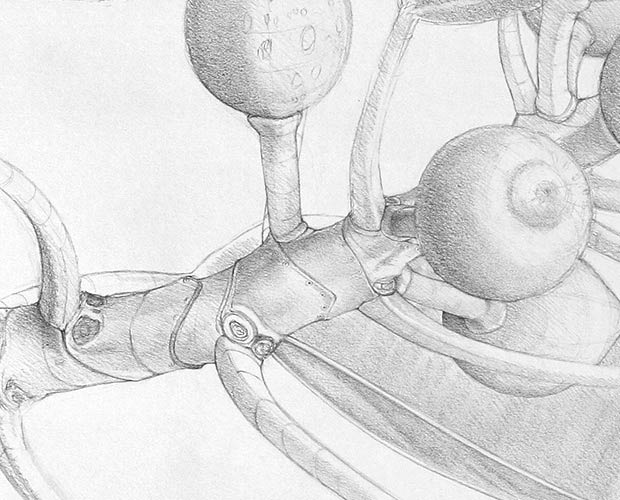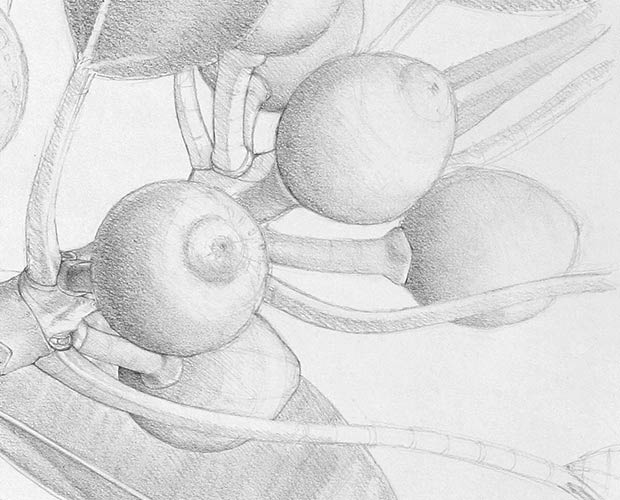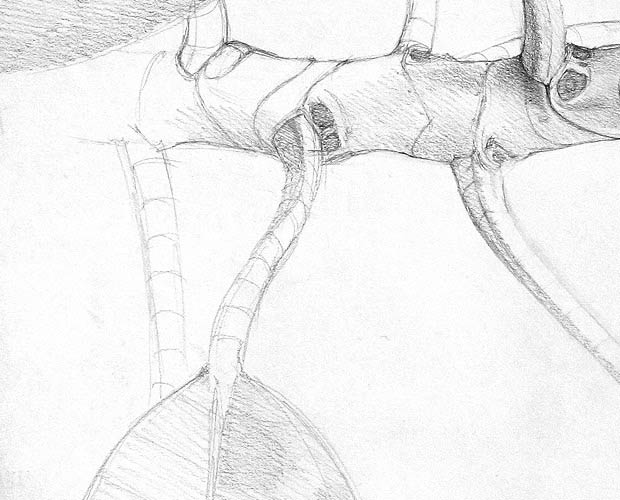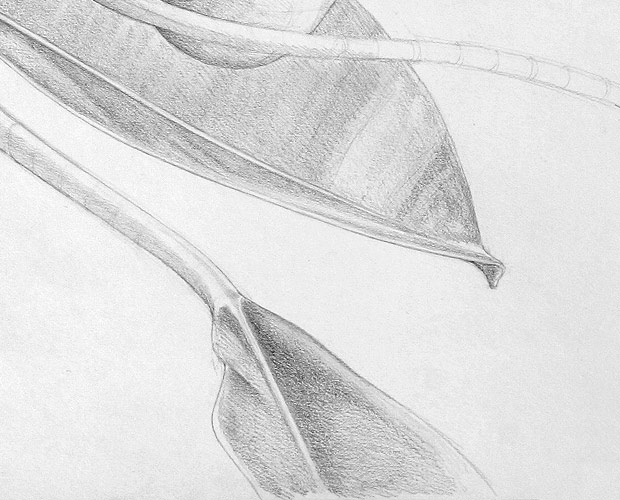57 cm (w) x 38 cm (h), pencil on paper.
Date produced: 15th May 2005
This was drawn entirely on-site. With this drawing, I concentrated on expressing the interesting forms on the end of one branch end as accurately as I could. I produced the drawing at more than double the size of the branch end in reality, and I observed the details very carefully. The drawing helped me to formulate some hypotheses about the crucial structures at the end of every branch. One ‘series of hypotheses’ is as follows: The ends of the branches themselves appear to be made of interlocking sections. Tiny gas exchange holes inside small mounds (stomata?) can be seen along the junctions of each section. These look like rivets in the drawing. The sections are probably indicative of a ‘growth cycle’ (possibly several growth cycles occur through a single year). Between these interlocking sections, a node develops that results in the growth of one leaf stem and two fruit stems. After the leaf stem and the fruit stems have developed fully, the fruit starts to ripen. The fruit, with stem, ripens and drops one at a time, leaving two circular marks just above the leaf stem. I had wondered what those round marks were, until I noticed the repeating pattern of one leaf stem with two fruit stems further out on the ends of the branches. The old fruit ripens and drops, leaving just the leaf stems and marks. This also explains the observation that at just about any time that I’ve seen the tree, typically just one fruit in every cluster of fruit has ripened to a deep red purple (all the other fruit in the cluster are green). Also, this ripened fruit is ‘behind’ all the other fruit in the cluster, when looking from the outside of the tree. That is, the ripened fruit would be the oldest fruit in the cluster. As the branch end extends, the oldest leaves behind the group of new ones become less effective (in the shade of newer leaves), and drop off as well. In my mind, I can see a constant process of new segment growth, development, and dropping, while the process continues from the end of the newly acquired segment. The drawing was done completely from a normally attached, growing branch end, in very still conditions. Unfortunately, the particular branch end I used as the model for doing this drawing was broken off (cause unknown) before I could finish this drawing.
|


